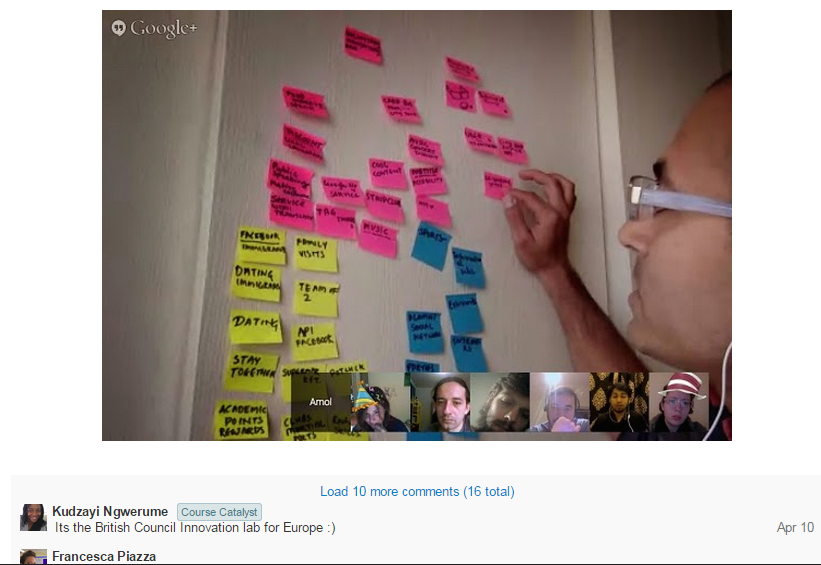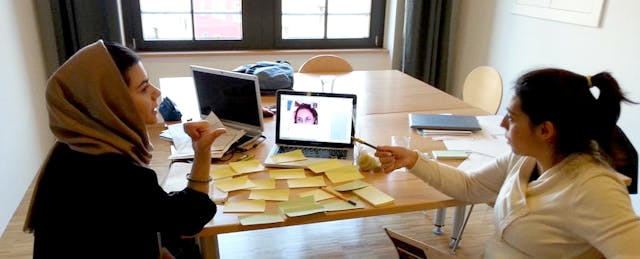The completion rate for MOOCs hovers between 2 and 10 percent. Enthusiasm about these free online courses reached its fever pitch in 2012 and has since fizzled, with companies like Udacity and Coursera pivoting towards models that promise skills development rather than the disruption of higher education.
Yet there are still people who successfully complete MOOCs. +Acumen started offering free online courses in 2013 to help people tackle problems of poverty in their communities. A significant portion of our 200,000 registrations come from busy professionals working in non-profits, start-ups, healthcare companies, government agencies and design firms eager for self-paced professional development. How do they find the time and drive to complete a MOOC? They tap into peer pressure.
Early on, +Acumen figured out that working professionals appreciate an element of social accountability so we built online courses designed to be completed in small groups. The barrier to entry is high—you have to convince a group of friends or colleagues to sign up with you—but if you do find a group, it’s a great way to increase the odds that you’ll actually finish. Does the thought of group work make you cringe? Think of it as a book club rebooted with 21st century technology, where participants hold each other responsible for applying what they learned online to build real prototypes, start real businesses or solve real problems. Completing a MOOC with a group is also a great way to meet people in a new city or facilitate a more inspired professional development session in your office.
To learn more about the people who successfully complete MOOCs in teams, we mined the data from our last offering of the Human-Centered Design course, which 432 teams completed and in which 1753 individuals earned certificates during last quarter. We identified three types of groups that were distinctively successful at completing an online course:
- Co-Workers: Groups of approximately four to seven colleagues from the same workplace who used the course to work on their own challenges relevant to their jobs.
- Book Club 2.0: Groups of three to eight friends with varied interests and professional backgrounds who met in person. For example, there was a team that named themselves “Pre-Brunch” and clearly blended a weekend social activity with a learning experience.
- Virtual Collaborators: Groups that overcame the difficulties of coordinating across timezones and low-bandwidth internet connections to complete the course with a virtual group. These groups typically had one expert leader who put in a lot of extra legwork to coordinate the logistics.

Then we conducted interviews with 36 “power users” who completed five or more of our courses to learn more about what made them successful at rallying a team and completing a MOOC. One was Chloe Stull-Lane, a young international aid worker living in Nairobi. She works on issues of food security and agriculture across the Horn of Africa and completed four online courses with a team.
“Part of me was curious about meeting some new people through this mechanism,” Stull-Lane said. “I wanted to find other people who also care about learning in their spare time, even if they are not doing it towards a degree.”
After finishing her first MOOC with a team of other young professionals from a +Acumen volunteer chapter, Stull-Lane decided to introduce MOOCs to her workplace. “The reason I pushed other people to take these courses in a team was that it was really good use of time,” she said. “You need to put in the prep work to come to the discussion, but the amount of hours I spent on the course were well worth the amount of learning. When you facilitate a course like this, it gives you a means to introduce innovation into your organization without presenting it as your personal opinion. An online course provides a framework for important discussions.”
Facilitators like Chloe are key to making a social MOOC experience work. If you’re an individual looking to complete an online course with a team, here are some strategies that we’ve seen the most successful use:
- Form a team that can meet in person. 80% of the teams that successfully completed the Human-Centered Design MOOC met in person, compared to just 20% of the teams who sought to work with a virtual group.
- Recruit 3 people for your team. The teams that successfully completed the course had an average of 4.2 team members. This suggests that you want just enough people to have interesting discussions, but not so many that schedules become impossible to coordinate.
- Start by working with people you already know, preferably your friends or coworkers. Some online learning providers advertise that you can use the platform to meet other learners to work with on course projects. This is an exciting idea in theory, but in practice only 8% of the teams who met for the first time on the platform completed this course. By contrast, 47% of the teams who successfully finished were working with friends and 23% with coworkers. A scant 3% were working with family members.
- Be creative with using supplemental technologies for virtual collaboration. Busy schedules will sometimes get in the way, but keep the momentum going with virtual tools if you can’t meet in person. One team from Pittsburgh, Detroit and Ontario used Stormboards to jointly brainstorm. Others hacked together their own hardware solutions to conduct brainstorm sessions via Facetime and Google hangouts, typically designating one person to record the ideas in a Google doc in real time.
- Find a MOOC that offers the opportunity to customize the assignments for your workplace or personal projects. Teams are motivated when they feel like a MOOC is moving something real forward. The best will have open-ended assignments that let you plug in your own challenges or workshop real situations with a group of coworkers or friends. For example, the Department of Labor just rolled out Design Kit, our course on Human-Centered Design co-developed with IDEO.org, to all its affiliates receiving funding through the Workforce Innovation and Opportunity Act as part of an optional design challenge. The projects developed in this MOOC will be presented to the Secretary of Labor as part of a Learning Exchange and Celebration at the White House and have the potential to be implemented. Busy adults are incentivized to take courses when they can apply what they learn online directly to an offline challenge. Search MOOC platforms like EdX, Coursera, and NovoEd for courses built by practitioners (not just academics) in your field. And if you want to keep connecting online learning to real-world applications, here’s an option: +Acumen launches a new course on prototyping with IDEO.org on October 27th.


